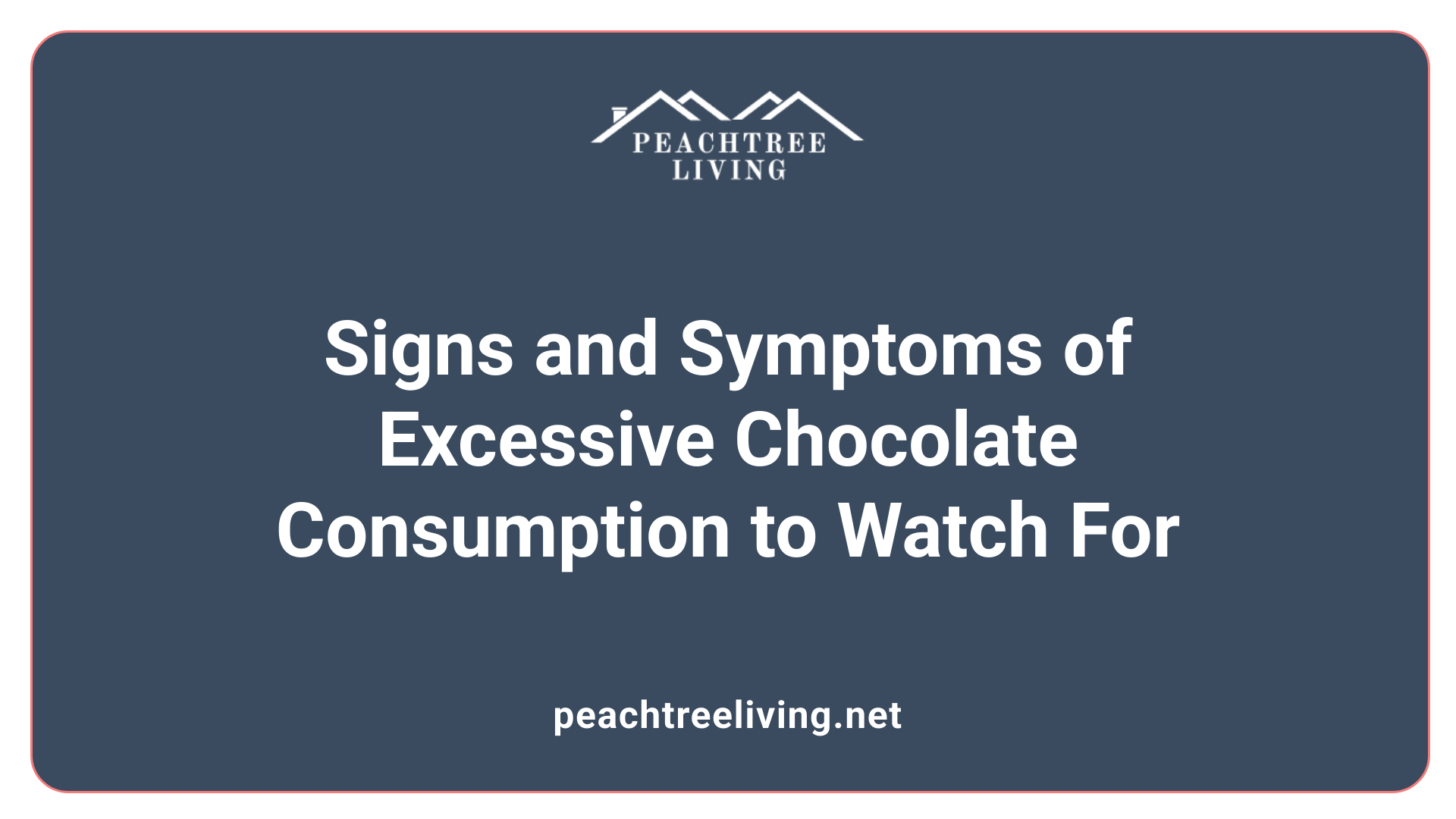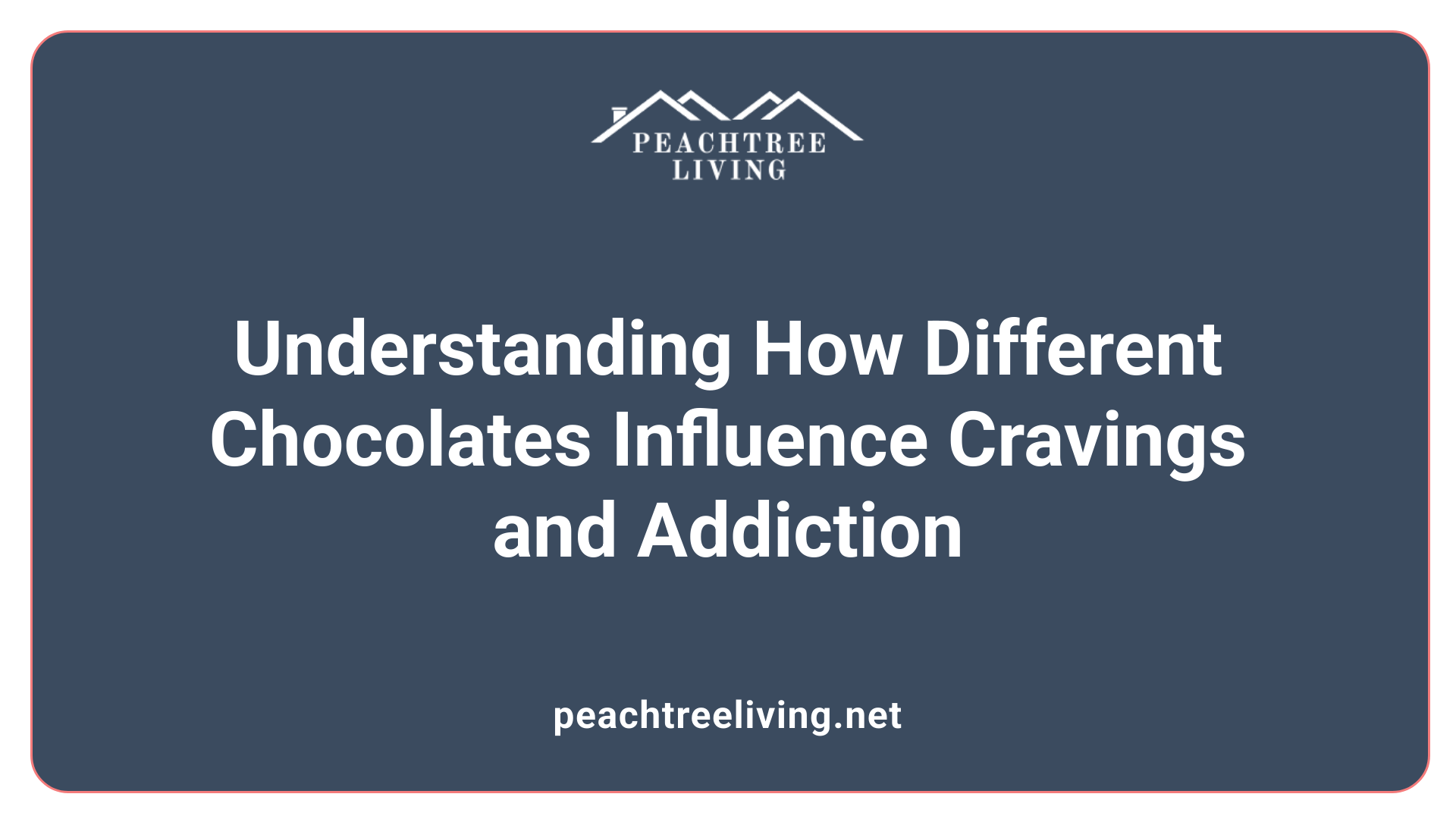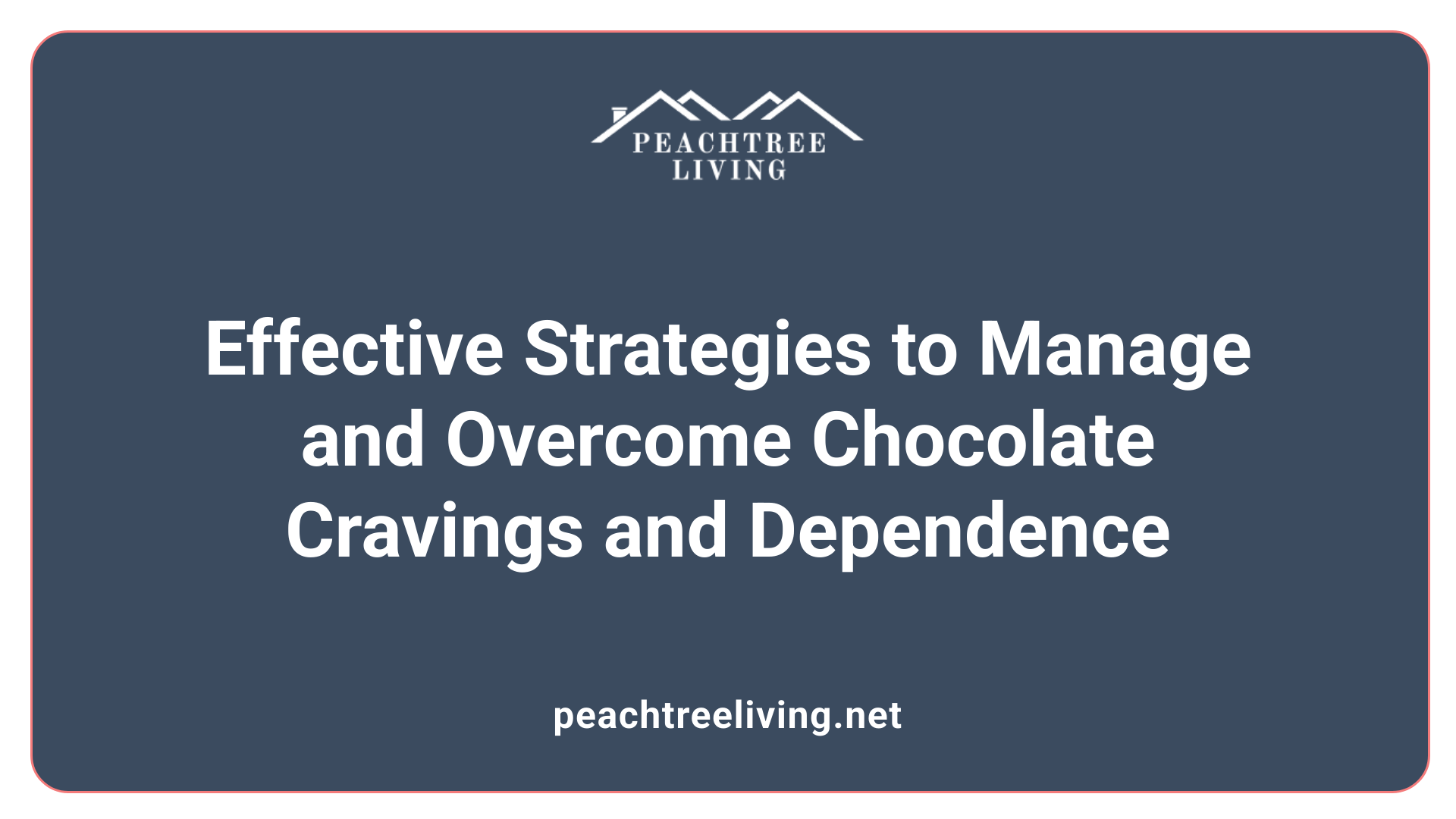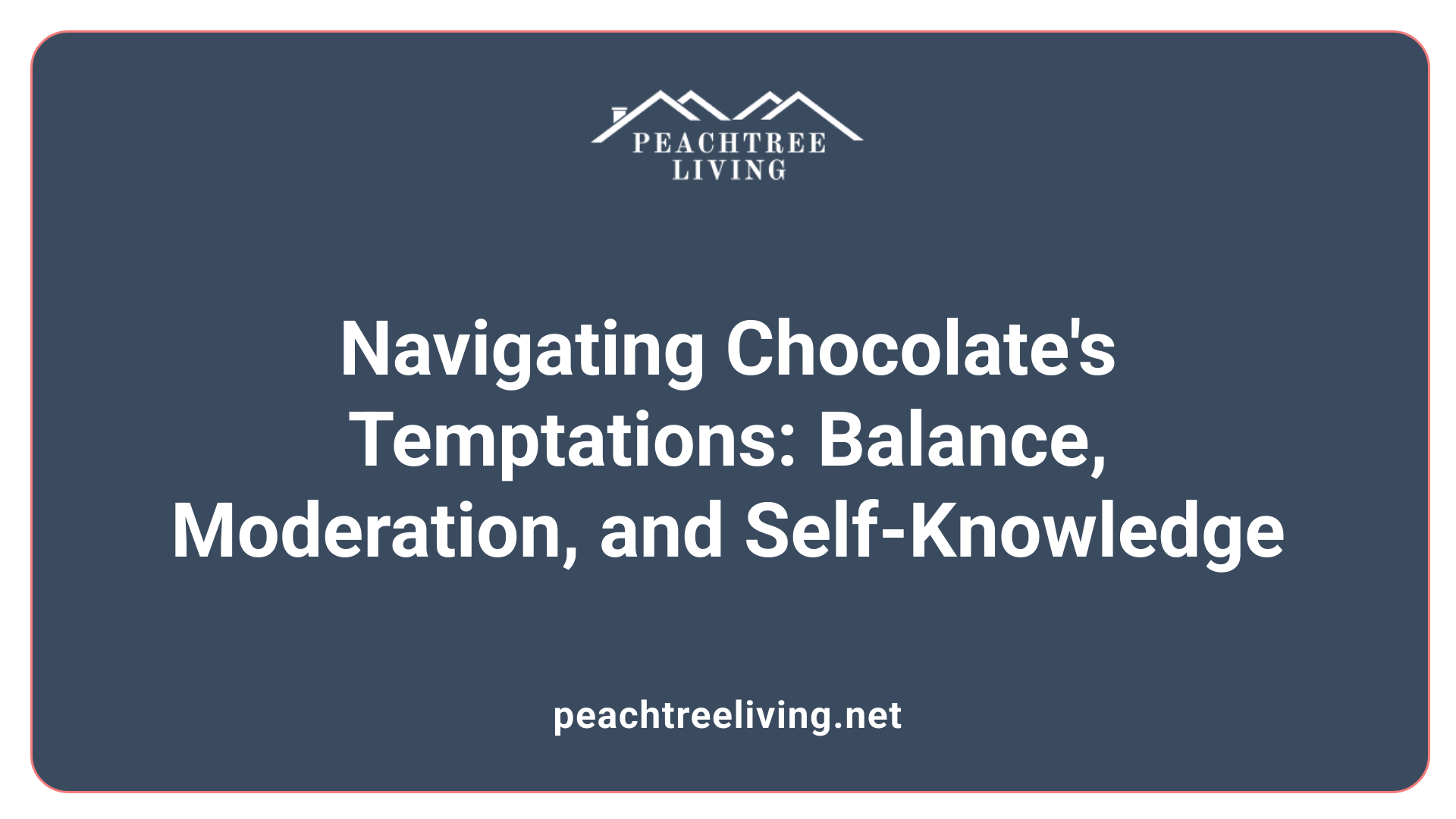Unraveling the Complex Relationship Between Chocolate and Our Brain
Chocolate is widely loved worldwide, not just for its delightful taste but also for its complex interactions with our brain chemistry. While many enjoy chocolate without issue, some individuals experience intense cravings or behaviors that resemble addiction. This article explores whether chocolate can be truly addictive, delving into scientific research, psychological and physiological factors, signs of problematic consumption, health implications, and effective management strategies.
The Biological and Chemical Foundations of Chocolate's Appeal

Components in chocolate that influence brain chemistry
Chocolate's unique ability to stimulate the brain’s reward system is largely due to its complex chemical makeup. It contains several biologically active compounds, such as methylxanthines (including theobromine and caffeine), biogenic amines, and cannabinoid-like fatty acids. These substances can influence mood and psychological sensations, mimicking certain effects of addictive drugs.
In particular, theobromine and small amounts of caffeine are stimulants that can increase alertness and mood. Although the main compound, theobromine, is non-addictive, caffeine can cause dependence in some individuals, especially with high or regular consumption. Biogenic amines like phenylethylamine are also present, which are known to influence emotional states and feelings of euphoria.
Additionally, chocolate contains serotonin, tryptophan, and anandamide, which affect mood by increasing feelings of happiness and relaxation. These substances interact with neurochemical pathways, boosting dopamine and endorphin levels, which reinforce pleasurable feelings and motivate repeated consumption.
Psychoactive substances like theobromine, caffeine, and phenylethylamine
The psychoactive effects of chocolate are centered around its key chemical constituents. Theobromine, the main compound in cocoa, acts as a mild stimulant and stimulant-like mood enhancer. It binds to adenosine receptors, promoting alertness but generally without the strong addictive potential seen with caffeine.
Caffeine, present in smaller amounts, can induce dependence through increased dopamine activity, contributing to alertness and arousal. Its presence is especially notable in milk and white chocolates, which often contain added dairy components that can also stimulate brain reward mechanisms.
Phenylethylamine, sometimes dubbed the 'love drug,' is a natural monoamine that promotes feelings of euphoria and attraction. While its levels in chocolate are relatively low and quickly metabolized, it still plays a role in the overall mood-enhancing effects associated with chocolate consumption.
How sugar and fats stimulate reward pathways
Sugar and fats are fundamental to chocolate’s taste and texture, but they also significantly influence brain chemistry. The high sugar content in chocolate triggers rapid dopamine release in reward-related brain areas, such as the nucleus accumbens. This creates intense feelings of pleasure and reinforces the desire to consume more.
Fats in chocolate contribute to its sensory appeal, affecting the texture and aroma, which are crucial in hedonic evaluation. These fats activate taste receptors linked to reward pathways and enhance the pleasurable experience.
The combination of sugar, fats, and psychoactive compounds in chocolate creates a strong stimulus for the brain’s reward system. This dual action—chemical effects from constituents like dopamine stimulants and the hedonic feedback from sugar and fats—might explain why chocolate is often associated with cravings, emotional comfort, and addictive-like behaviors.
| Substance | Role in Brain Chemistry | Effect on Behavior | Additional Notes |
|---|---|---|---|
| Theobromine | Mild stimulant, adenosine receptor antagonist | Alertness, mood enhancement | Non-addictive, less potent than caffeine |
| Caffeine | Central nervous system stimulant | Dependence, increased alertness | Found in milk/white chocolates, triggers dopamine pathways |
| Phenylethylamine | Monoamine, influences mood | Euphoria, attraction | Levels in chocolate are low, rapid metabolism |
| Sugar | Triggers rapid dopamine release | Pleasure, craving | Responsible for high-pleasure 'rush' |
| Fats | Activate taste receptors, reward pathways | Texture, overall hedonic experience | Enhances flavor, sensory appeal |
Why can chocolate be addictive?
Chocolate’s potential to be considered addictive stems from its chemical and sensory properties. It contains biologically active substances that can impact brain chemistry similarly to drugs, such as methylxanthines, biogenic amines, and cannabinoid-like fatty acids. These compounds can induce behavioral and psychological effects, particularly in susceptible individuals.
Research shows that brain activity related to cravings and reward increases when exposed to chocolate or chocolate-flavored foods. For example, volunteers with higher scores on food addiction scales exhibit heightened activity in brain regions associated with craving and pleasure when consuming chocolate milkshakes.
Furthermore, hormonal fluctuations, especially in women during menstruation, amplify chocolate cravings, underscoring a hormonal link in addictive-like behaviors. The sensory pleasure derived from taste, aroma, and texture—alongside the brain’s biochemical response—creates a reinforcement loop. This encourages repeated consumption despite negative health consequences, hallmark signs of an addiction.
Although chocolate does not contain addictive drugs in the traditional sense, its components influence the reward pathways remarkably. This can lead to behaviors like craving, loss of control, binge eating, and feelings of guilt or shame, especially among sensitive individuals. Thus, the complex interaction between its chemical constituents, sensory appeal, and hormonal factors underpins why chocolate can be considered addictive.
Neurochemical Response to Chocolate Consumption

Why can chocolate be addictive?
Chocolate's potential for addiction lies in its complex interaction with the brain's reward system. It contains several biologically active compounds, such as methylxanthines (including caffeine and theobromine), biogenic amines, and fatty acids resembling cannabinoids. These substances can influence mood and behavior by stimulating chemicals in the brain, producing effects similar to those seen with addictive drugs.
The primary mechanism involves the activation of brain pathways associated with pleasure and reward. When consuming chocolate, these chemicals promote the release of neurotransmitters like dopamine and serotonin, which are responsible for feelings of happiness and satisfaction.
Research shows that chocolate also triggers psychological reactions such as intense craving and feelings of euphoria. In particular, highly processed chocolates with added sugar and fats enhance these effects, reinforcing the desire for more. Hormonal fluctuations, especially in women during menstruation, can increase chocolate cravings, further complicating the relationship with its consumption.
Behavioral studies reveal that exposure to chocolate activates reward centers in the brain, similar to the response triggered by addictive substances. For example, neuroimaging techniques have demonstrated increased activity in regions like the nucleus accumbens and the ventral tegmental area, which are key components of the reward circuitry.
Animal studies support these findings. Rats fed chocolate or chocolate-like foods showed increased production of enkephalins, opioid-like compounds that bind to reward-related receptors. These neurochemical changes mirror processes observed with actual drugs, although chocolate's effects are generally milder and do not produce true dependence.
Additionally, sensory factors such as taste, aroma, and texture provide hedonic stimulation that reinforces craving behaviors. The rapid absorption of sugar gives immediate pleasure, while fats and other compounds prolong the reward experience.
Despite these effects, it is important to recognize that chocolate is less likely to cause addiction compared to substances like cocaine or nicotine. Its influence is primarily through neurochemical and psychological pathways that promote habitual consumption rather than true chemical dependence.
In summary, the neurochemical response to chocolate involves the activation of brain pathways associated with reward, pleasure, and craving. The combined effects of its chemical constituents, sensory appeal, and hormonal influences create a complex interaction that can promote compulsive eating behaviors in susceptible individuals, blurring the lines between preference and addiction.
Psychological and Emotional Factors in Chocolate Cravings

How do cravings for chocolate differ from addiction?
Cravings for chocolate are intense desires that many people experience, often driven by its sensory appeal—such as texture, aroma, and sweetness—as well as emotional or nutritional needs. These cravings tend to be episodic, fluctuating with hormonal changes like those during menstruation or periods of stress. They are typically short-lived and can be satisfied through moderate consumption.
In contrast, addiction involves a compulsive pattern of consuming chocolate despite it causing negative health or emotional consequences. It usually features a persistent can't-control feeling, a strong urge to eat, and continued consumption to avoid withdrawal symptoms like irritability or mood swings. The behavior becomes difficult to stop, even when aware of harmful effects.
While both cravings and addiction activate the brain’s reward pathways—mainly through the neurotransmitter dopamine—there are differences at the neurological level. Food addiction, especially to foods high in sugar and fat like chocolate, can produce behaviors and brain responses similar to those seen in drug addiction. These include heightened activity in regions associated with cravings, reward, and addiction, such as the nucleus accumbens.
Certain psychoactive ingredients in chocolate, such as theobromine, phenylethylamine, and small amounts of caffeine, may also influence mood and contribute to addictive-like behaviors, especially in susceptible individuals.
Ultimately, cravings are natural and driven by hedonic (pleasure-seeking) and physiological factors, while addiction signifies a troublesome pattern of behavior that involves loss of control, persistent use despite adverse effects, and often requires intervention or treatment.
Recognizing the Signs and Symptoms of Excessive Chocolate Consumption

What are the signs and symptoms of chocolate addiction?
Identifying a problematic relationship with chocolate involves observing specific behavioral and emotional patterns. One common indicator is a persistent and intense craving for chocolate that seems uncontrollable. People often find themselves unable to resist eating chocolate even when they are not hungry or have already consumed enough. This compulsive behavior can continue despite awareness of negative health consequences, such as weight gain or dental issues.
Another hallmark of chocolate addiction is eating large amounts or in a manner that surpasses normal limits. Individuals might indulge until they feel physically uncomfortable or experience stomach pain. Secret eating is also prevalent; many hide their consumption out of shame or guilt, especially if they recognize that their intake is excessive.
Feelings of guilt, shame, or depression following chocolate consumption are common emotional responses. These feelings often perpetuate a cycle of guilt-driven bingeing to seek comfort or mood elevation.
Binge eating episodes characterized by rapid consumption, loss of control, and eating in the absence of hunger are frequent signs. Some may exhibit behaviors like eating in response to emotional triggers such as stress, boredom, or sadness, further fueling unhealthy patterns.
The combination of these behaviors and emotional reactions signals that one might be experiencing more than a simple preference for chocolate. It could represent an addiction-like state, where cravings dominate thoughts and actions, leading to a serious impact on mental, emotional, and physical health.
Recognizing these signs early can facilitate intervention through behavioral therapy, dietary adjustments, or seeking professional help, thereby improving overall well-being and preventing long-term health problems.
Health Risks Associated with Excessive Chocolate Intake

Can chocolate be addictive, and what are the health implications?
Chocolate has a complex relationship with the brain’s reward system, making it susceptible to causing cravings and behaviors that resemble addiction. Its high content of sugar, fats, and psychoactive compounds such as theobromine and caffeine stimulates the brain’s pleasure centers, leading to an increase in dopamine, the chemical associated with reward and pleasure.
Multiple scientific studies support this connection. Brain imaging research has shown that when people consume or even view chocolate, activity increases in regions linked to craving and reward, much like responses observed with addictive drugs. This neurochemical response can foster compulsive consumption patterns, where individuals continue to eat chocolate despite negative consequences.
While casual, moderate consumption of chocolate generally poses no health threat, excessive intake can lead to dependency-like behaviors. Some of these include persistent cravings, loss of control over consumption, secret eating, and continued intake despite feeling guilty or experiencing health issues. Over time, this can translate into physical health problems like weight gain and obesity, especially when consumed in large quantities or in highly processed varieties that contain added sugars and fats.
The health implications of persistent chocolate cravings and overconsumption are significant. They encompass not only physical issues such as increased risk of obesity, dental problems, and gastrointestinal disturbances but also psychological effects like mood swings, guilt, depression, and low self-esteem. For susceptible individuals, these behaviors can interfere with daily life, relationships, and overall well-being.
To manage these risks, adopting strategies like moderation, mindful eating, and avoiding viewing chocolate as forbidden can be effective. Recognizing triggers and implementing behavioral modifications or seeking professional support can help develop a healthier relationship with chocolate. In some cases, medical intervention may be considered, but the primary focus remains on behavioral strategies to control consumption and mitigate health risks.
This understanding highlights the importance of being aware of how certain foods, particularly processed chocolates high in sugar and fats, can impact both physical health and emotional balance. While chocolate itself is not classified as an addictive substance in the medical sense, its capacity to activate reward pathways underscores the need for conscious consumption and healthy habits.
The Spectrum of Chocolate and Its Impact on Cravings and Addiction

Can chocolate be addictive, and what are the health implications?
Chocolate's reputation as a potentially addictive food is supported by numerous scientific studies that explore how its specific ingredients stimulate the brain's reward system. This stimulation occurs primarily through the activation of pathways involving neurotransmitters like dopamine, serotonin, and endorphins—chemicals associated with pleasure, mood regulation, and stress relief.
Research indicates that eating chocolate can trigger brain activity in regions linked to cravings and reward. For example, a study published in the Archives of General Psychiatry found that volunteers with higher scores on food addiction scales showed increased activity in these areas when exposed to chocolate milkshake. Similar patterns are observed with candies and high-sugar, high-fat foods, suggesting that chocolate shares neurochemical effects with addictive substances.
These effects are partly due to the composition of chocolate, especially the high sugar and fat content in processed varieties like milk chocolate. Sugar rapidly stimulates dopamine release, producing feelings of pleasure and satisfaction. Over time, repeated exposure can lead to desensitizing of these reward pathways, which may result in increased consumption to achieve the same effect.
The psychoactive compounds in chocolate, such as theobromine and caffeine, have stimulant effects that can contribute to dependence, although these are less potent than other addictive drugs. Theobromine, in particular, is the main compound in cocoa and has mild stimulating properties, but it does not meet the clinical criteria for addiction.
People exhibiting signs of a problematic relationship with chocolate often report frequent cravings, an inability to control intake, feelings of guilt or shame, and eating large quantities or until stomach discomfort. These behaviors can contribute to health problems like weight gain, obesity, dental issues, and mood disturbances.
While chocolate can provide short-term mood elevation and stress relief, excessive consumption can lead to negative emotional states such as depression, especially when cravings are unfulfilled or guilt sets in. The addictive potential is further compounded by the sensory and emotional associations with joy, celebration, and comfort, making moderation essential.
From a health perspective, ongoing overindulgence may contribute to metabolic issues, including insulin resistance, type 2 diabetes, and cardiovascular problems. Additionally, high sugar intake can cause dental decay and gastrointestinal discomfort.
Management strategies for chocolate cravings often include moderation, mindful eating, and substituting high-sugar processed chocolates with darker, less processed options. Dark chocolate contains beneficial antioxidants such as flavonoids, which offer health benefits like improved cardiovascular health and enhanced cognitive function, but it should still be consumed in moderation due to its calorie and fat content.
In some cases, psychological approaches such as behavioral therapy or support groups are recommended to address underlying emotional triggers like stress, anxiety, or hormonal fluctuations, which frequently influence chocolate cravings. Nutritional counseling to ensure balanced diets rich in magnesium and other mood-regulating nutrients can also help reduce dependency on chocolate for emotional comfort.
In conclusion, while chocolate exhibits some features similar to addictive substances, it is generally not classified as an addictive drug. Its ability to stimulate pleasure-related brain pathways explains why many individuals develop habitual or compulsive eating behaviors around it. Recognizing these patterns and adopting healthier habits can help maintain a balanced relationship with chocolate, minimizing health risks and promoting overall well-being.
Strategies for Managing and Overcoming Chocolate Addiction

What are causes and treatment options for chocolate addiction?
Chocolate addiction is mainly driven by its natural and added ingredients that stimulate the brain's reward system. Substances like caffeine, theobromine, phenylethylamine, and serotonin present in chocolate can trigger pleasurable feelings by activating neurochemical pathways associated with reward and mood regulation.
Many factors contribute to the development of an addiction-like relationship with chocolate. Emotional states such as stress, anxiety, or depression often lead people to seek comfort in chocolate. Hormonal fluctuations, especially in women during menstruation, also intensify cravings. Additionally, the high sugar and fat content of processed chocolates enhances their addictive potential by providing rapid spikes in blood sugar followed by crashes, which reinforce the desire to keep consuming.
Research indicates that highly processed chocolates with artificial ingredients and high sugar levels may increase susceptibility to addictive behaviors. These foods can cause neurochemical reactions similar to those experienced with drug use, including increased dopamine release.
Treatment options focus on behavioral and psychological strategies aimed at reducing dependence. Gradually decreasing chocolate intake helps prevent withdrawal symptoms and reduces cravings over time. Replacing chocolate with healthier alternatives, such as fruits, nuts, or dark chocolate with lower sugar content, can satisfy the sweet tooth more healthily.
Implementing mindfulness and moderation in eating habits helps individuals regain control. Recognizing emotional triggers and employing stress management techniques like meditation, exercise, or counseling can address underlying causes of overconsumption.
Support networks, including counseling or support groups, provide encouragement and accountability. For some, medications like Naltrexone—which blocks pleasurable effects in the brain—may be considered, although more research is necessary to establish their efficacy.
Overall, a comprehensive approach involving behavioral adjustments, psychological support, and controlled dietary choices forms the foundation of effective management of chocolate addiction. Awareness of the triggers and conscious efforts to develop healthier habits are essential steps toward overcoming reliance on chocolate.
Conclusion: Navigating Chocolate’s Temptations Responsibly

Balancing Chocolate Consumption with Moderation and Self-Knowledge
Chocolate’s irresistible appeal stems from its complex combination of sugar, fat, and psychoactive compounds such as theobromine and phenylethylamine, which stimulate the brain’s reward pathways. Consuming it triggers pleasurable feelings, activating neurotransmitters like dopamine and serotonin, and can lead to cravings that resemble addictive behaviors in some individuals.
However, understanding that chocolate does not contain strong addictive substances like opioids or alcohol is essential. It is the high sugar and fat content, especially in processed varieties, that contribute to its potential for overindulgence and addictive-like responses. Recognizing personal triggers—whether emotional states, hormonal fluctuations, or environmental cues—is a crucial step toward maintaining a healthy relationship with chocolate.
Mindful eating, which involves savoring small portions and appreciating the sensory experience, can help prevent overconsumption. Setting clear boundaries, avoiding environments that tempt bingeing, and choosing darker chocolates with higher cacao content—known to contain beneficial antioxidants—are practical strategies. Also, replacing chocolate cravings with healthier alternatives like nuts or fruits can mitigate compulsive eating.
The Role of Education and Support in Managing Cravings
Educating oneself about the science behind chocolate’s effects on the brain and body fosters awareness and empowers healthier choices. Understanding that cravings often result from biological, psychological, and social factors may help reduce guilt associated with occasional indulgences.
Support systems, whether through familial encouragement, peer groups, or professional counseling, contribute significantly to managing compulsive behaviors. Cognitive-behavioral therapy (CBT), nutritional counseling, and stress management techniques can address underlying emotional triggers and improve impulse control.
In cases where cravings are intense or persistent, medical interventions such as medications, like Naltrexone—though still under research—may offer additional assistance by mitigating the rewarding effects of sweet foods. Yet, these should always be used under medical supervision.
Setting Realistic Expectations About Chocolate’s Role in Health
While dark chocolate contains antioxidants and may offer certain health benefits when eaten in moderation, it remains calorie-dense and high in fats and sugars. Overindulgence can lead to weight gain, dental issues, and metabolic problems.
Balanced consumption involves enjoying chocolate as an occasional treat rather than a daily necessity. Developing a balanced perspective—viewing chocolate as a pleasurable, culturally significant food rather than a health staple—allows for responsible enjoyment.
Ultimately, a holistic approach that combines education, self-awareness, moderation, and support can help individuals enjoy chocolate responsibly, reduce the risk of problematic cravings, and maintain overall well-being.
Stepping Towards a Healthier Relationship with Chocolate
While chocolate offers pleasure and cultural significance, understanding its potential for addiction and health effects enables us to enjoy it responsibly. Recognizing the signs of problematic consumption, managing cravings through moderation, and exploring healthier alternatives are key steps towards a balanced approach. Education, self-awareness, and support can help prevent overindulgence, ensuring that chocolate remains a source of joy rather than a cause of health or emotional distress. By adopting mindful eating habits and understanding the complex neurochemical interplay, we can savor chocolate’s benefits without falling into its addictive patterns.
References
- Can you become addicted to chocolate? - Harvard Health
- Chocolate Addiction: Is It Real or a Myth? - Healthline
- Can a Person Be Addicted to Chocolate? Symptoms and How to ...
- Why chocolate is so addicting — and how to tap into the health ...
- Chocolate addiction: symptoms, causes, treatments, how to stop ...
- Chocolate: food or drug? - PubMed
- Can I Be Addicted to Chocolate? - Psych Central
- Chocolate as Addictive as Heroin? | Gladstones Clinic

